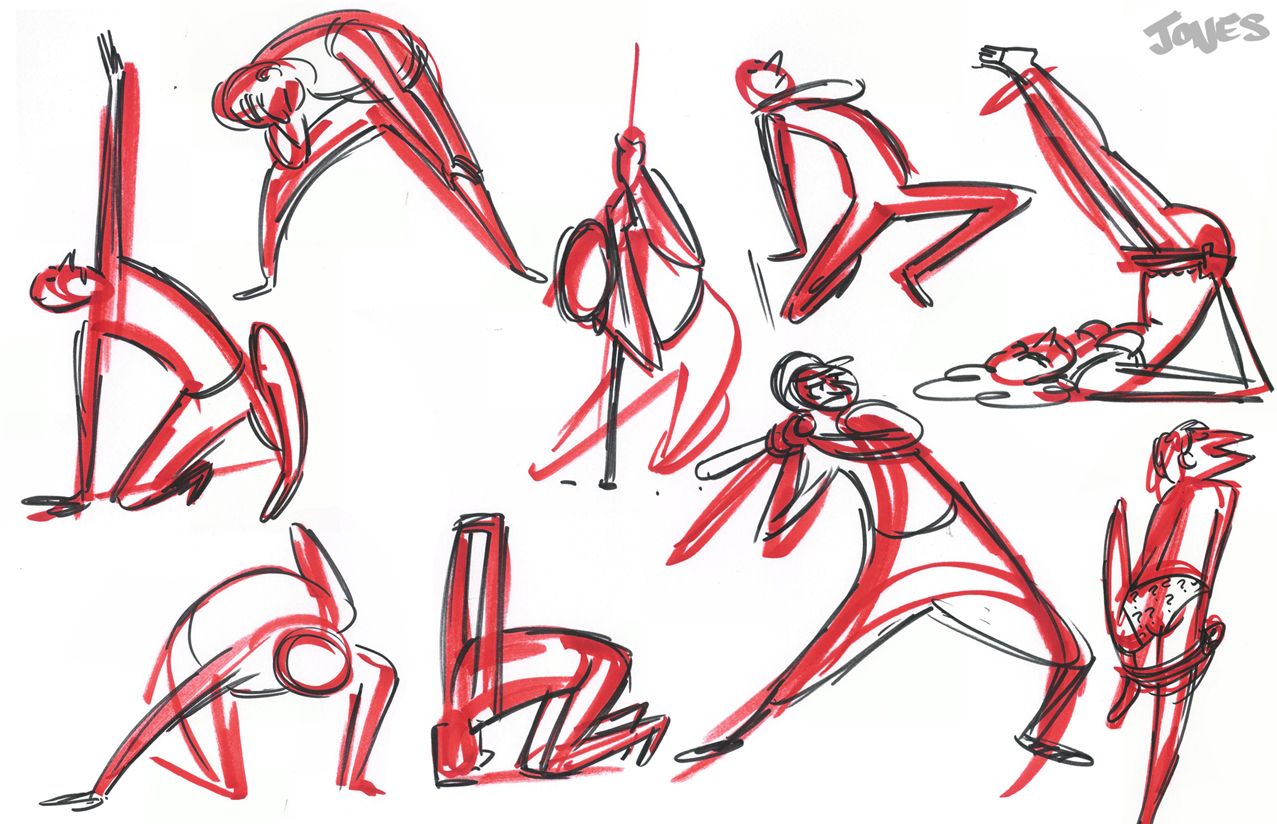The concept of "line of action" is fundamental in the realms of art, animation, and even performance. It serves as a guiding principle that helps artists and animators create dynamic and engaging compositions. The line of action is not just a simple line; it represents the flow and energy within a figure or scene, leading the viewer’s eye and conveying movement. By understanding this concept, creators can infuse life and intention into their work, making it more relatable and visually appealing.
When artists sketch or animate, they often begin with the line of action to establish the overall pose of their characters. This technique allows them to capture the essence of movement and emotion, providing a foundation for more detailed work. For instance, in figure drawing, the line of action can dictate the direction of a character's movement, helping to create a sense of balance and weight. Without this foundational element, the artwork may appear stiff or lifeless, lacking the vibrancy that brings characters to life.
In addition to enhancing visual storytelling, the line of action can also guide the viewer’s interpretation of a scene. By directing attention to specific areas or actions, the artist can evoke particular emotions or highlight important narrative elements. As we delve deeper into this concept, we will explore its significance in various artistic fields, examine its applications in different mediums, and discover how it can transform ordinary compositions into extraordinary visual experiences.
What is the Line of Action?
The line of action is an imaginary line that represents the primary direction of movement and energy in a character or scene. It serves as the backbone of a pose, providing a sense of flow and rhythm. Artists use this line to establish balance and weight in their compositions, ensuring that the elements within the artwork work harmoniously together.
How Do Artists Use the Line of Action?
Artists utilize the line of action in various ways, including:
- Establishing the main pose of a character
- Creating dynamic compositions that draw the viewer's eye
- Enhancing the sense of movement and energy in a scene
- Guiding the placement of limbs and body parts for realism
Why is the Line of Action Important in Animation?
In animation, the line of action plays a crucial role in creating fluid and believable motion. Animators use it to define the primary movement and energy of characters, ensuring that their actions feel natural and engaging. By following this line, animators can achieve a greater sense of weight and balance, making their characters more relatable to the audience.
Can the Line of Action be Applied to Other Art Forms?
Absolutely! The line of action is not limited to figure drawing or animation. It can be applied in various art forms, including:
- Painting: To create movement within a static composition
- Sculpture: To guide the form and flow of three-dimensional pieces
- Photography: To direct the viewer’s gaze through framing and composition
What Techniques Can Enhance the Line of Action?
Artists can enhance the effectiveness of the line of action by employing various techniques, such as:
- Using curves and dynamic shapes to create a sense of movement
- Incorporating contrast and color to draw attention to the line
- Experimenting with different perspectives to add depth and interest
How Can Beginners Practice the Line of Action?
For those new to art or animation, practicing the line of action can significantly improve their skills. Here are some tips for beginners:
- Start with simple shapes and forms to understand the flow of movement.
- Observe live subjects or reference images to capture dynamic poses.
- Sketch quickly to focus on the overall gesture rather than details.
- Iterate and refine your lines to find the most effective expression of action.
Who are the Influential Artists that Utilize the Line of Action?
Many renowned artists and animators have effectively used the line of action in their work. Some notable figures include:
| Name | Profession | Notable Works |
|---|---|---|
| Andrew Loomis | Illustrator, Author | Figure Drawing for All It's Worth |
| Frank Thomas | Animator | Disney Classics (e.g., Bambi, Snow White) |
| Glenn Vilppu | Artist, Instructor | Vilppu Drawing Manual |
Conclusion: Mastering the Line of Action
Understanding and mastering the line of action is essential for anyone involved in the visual arts. Whether you are a beginner or an experienced artist, incorporating this principle into your work can significantly enhance the quality and impact of your creations. By focusing on movement, energy, and flow, you can elevate your art and animation to new heights, captivating your audience and conveying your intended message effectively.
Unveiling The Height Of An NBA Legend: How Tall Is Steph Curry?
Tickling Your Funny Bone: The Best Of Funny Memes 2023
Discovering Zuma Raphael Street London: A Hidden Gem


